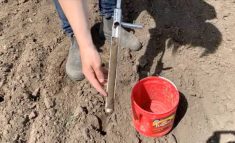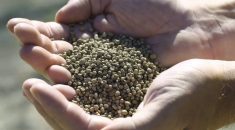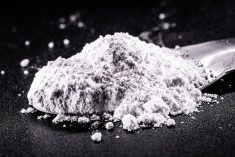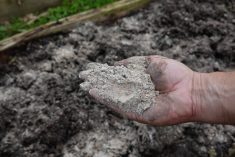In December 2020, the government of Canada announced a national target to reduce absolute levels of greenhouse gas (GHG) emissions from fertilizer application by 30 per cent below 2020 levels by 2030.
What does this mean for western Canadian farmers? It does not mean a 30 per cent reduction in nitrogen fertilizer use! But it does mean a 30 per cent reduction in greenhouse gas emissions. Rob Gamble and Dan Heaney prepared an excellent report called, “The Economics of 4R BMP Implementation and Emissions Reductions from Fertilizer: An Industry Perspective on Financial Implications of the 30% Nitrous Oxide Emission Reduction Target.” This report on the possible financial implications of reducing nitrous oxide emissions is well worth reviewing and can be found at as a PDF at fertilizercanada.ca.
First, what are greenhouse gases? The natural greenhouse gases are carbon dioxide (CO2), methane (CH4) and nitrous oxide (N2O). Some wonder if ammonia (NH3) is a greenhouse gas. It is not! Ammonia is a very reactive gas and is very short lived in the atmosphere. Therefore, it is not considered a greenhouse gas versus nitrous oxide, which can persist for a very long time in the atmosphere and is not reactive.
Read Also
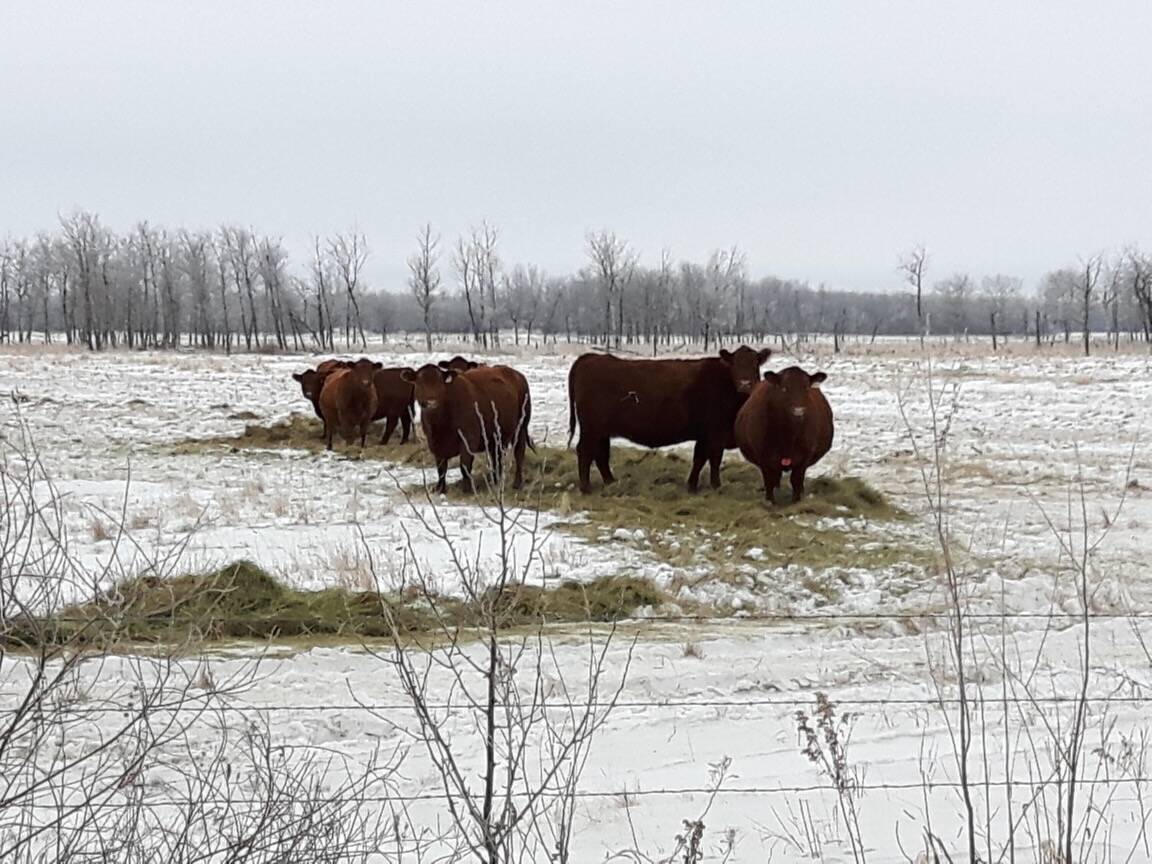
Prevent nitrate poisoning in overwintering beef cows
High-nitrate feeds can be deadly for overwintering beef cows. They can be used, but only if they’re processed and diluted in a lower nitrate ration.
The greenhouse gas of concern from nitrogen fertilizer is nitrous oxide. One molecule of nitrous oxide has the global warming potential of 298 carbon dioxide molecules. One kilogram of nitrous oxide released from fertilizer has the equivalent warming effect of 298 kilograms of carbon dioxide. To put it into perspective, in their report, Gamble and Heaney noted this has the same effect as running 110 litres of diesel fuel through a farm tractor.
What is the big deal with greenhouse gases and what is the greenhouse effect they cause? To put it simply, the earth’s surface is warmed by the energy from the sun. In turn, the surface of the earth reflects some of this heat back into the atmosphere, which is then partially absorbed by greenhouse gases. This retains heat in the atmosphere, which keeps the earth warm. Without a reasonable level of greenhouse gases, our planet would be too cold for life to exist. Unfortunately, various human activities have been adding increased levels of greenhouse gases to the atmosphere, resulting in a gradual increase in global warming.
Nitrous oxide losses from agricultural lands
What does the government of Canada plan to do? Its report, which can be found at the Government of Canada website, states emissions from synthetic fertilizers in Canada in 2020 accounted for 12.75 Mt CO2e (Mt CO2e is an abbreviation for megatonnes of carbon dioxide equivalent, and a megatonne is one million tonnes). With a 30 per cent reduction in emissions, this would set the emission target at 8.9 Mt CO2e per year by 2030. This would mean a reduction of 3.8 Mt CO2e compared with the 2020 baseline.
Actual losses of nitrous oxide are relatively low compared with the total use of nitrogen fertilizer. Figure 1 shows an Agriculture and Agri-Food Canada (AAFC) map of estimated nitrous oxide emissions from the various agricultural regions of Canada. For the majority of agricultural lands in Western Canada, emissions are less than one kilogram per hectare of nitrous oxide (one kilogram per hectare is approximately equal to 0.9 pounds per acre), with some exceptions in Manitoba and northern British Columbia.
Nitrogen fertilizer and nitrous oxide emission research in Alberta
When I was still with Alberta Agriculture, we conducted a study between 2008 and 2012 to compare urea (46-0-0), ESN (Environmentally Smart Nitrogen) and a urea-ESN blend with wheat, barley and canola responses at nine different soil locations across Alberta. At three uniquely different locations — Barrhead, Lacombe and Lethbridge — nitrous oxide emissions were meticulously measured in a separate experiment for four years. This experiment compared the performance of urea and ESN, where each was banded in fall and side banded at seeding in spring, at rates of 0, 30, 60, 90 and 120 kilograms of nitrogen per hectare.
Figure 2 (below) shows the cumulative nitrous oxide emissions from a Dark Gray soil near Barrhead. Nitrous oxide emissions in the control treatments that did not receive fertilizer were 0.5 kg/ha. At the highest nitrogen rate of 120 kg/ha for both urea and ESN, emissions were 0.9 kg/ha, while nitrous oxide emissions with fall applied ESN and urea at 120 kg/ha were 1.1 and 1.2 kg/ha, respectively. Actual emission losses due to nitrogen fertilizer for spring side banded urea and ESN were 0.4 kg/ha. Clearly, side banded nitrogen at seeding was better than fall banding to reduce emissions but there was no benefit to using ESN in spring versus urea.

Figure 3 (below) shows the cumulative nitrous oxide emissions from a Black soil near Lacombe. Nitrous oxide emissions in the control treatments were 0.8 kg/ha. At the highest nitrogen rate of 120 kg/ha for both urea and ESN, emissions were 1.1 kg/ha, while nitrous oxide emissions with fall applied ESN and urea at 120 kg/ha were 1.4 and 1.7 kg/ha, respectively. Actual emission losses due to nitrogen fertilizer for spring side banded urea and ESN were 0.3 kg/ha. At this site, there was no benefit using ESN to reduce nitrous oxide losses and spring side banded nitrogen was better than fall banding to reduce emissions.

Figure 4 (below) shows the cumulative nitrous oxide emissions from an irrigated Dark Brown soil near Lethbridge. Nitrous oxide emissions in the control treatments were 0.8 kg/ha. At the highest nitrogen rate of 120 kg/ha for ESN and urea, emissions were 1.0 and 1.3 kg/ha, respectively. Nitrous oxide emissions with fall applied ESN and urea at 120 kg/ha were 1.7 and 1.9 kg/ha, respectively. Actual emission losses due to nitrogen fertilizer for spring side banded ESN and urea were 0.2 and 0.4 kg/ha, respectively. At this site, there was a clear benefit using ESN to reduce nitrous oxide losses with both fall and spring applications. Spring side banded ESN had the lowest nitrous oxide emissions.

At all three sites, spring side banded nitrogen was best to minimize nitrous oxide emissions versus fall application. At two locations, there was no benefit to using ESN versus urea to reduce emissions, as soil conditions were not conducive for denitrification. However, at the irrigated site with better soil moisture conditions, emissions were lowest with the spring side banded ESN and second best with spring side banded urea.
Accurately measuring nitrous oxide emissions
Nitrous oxide losses due to fertilizer using best nitrogen management practices at Barrhead, Lacombe and Lethbridge were 0.4, 0.3 and 0.2 kg/ha, respectively. These are very low rates of loss. Can we accurately estimate a 30 per cent reduction in nitrous oxide loss by changing nitrogen fertilizer management? A number of scientists I have spoken with are increasingly troubled about our ability to accurately measure and verify emission reductions. Some scientists are worried about the uncertainty associated with the estimates of national nitrous oxide emissions. One of my former colleagues asked, “What is the point of setting targets when we cannot ever know if we have hit the target?” I agree completely and see this as both a huge concern and challenge.
On-farm nitrogen management in Western Canada in 2021
Most people in the agricultural industry likely agree that we must make every effort to reduce GHG emissions from our farming systems. I was very pleased to see that Fertilizer Canada surveyed 544 wheat growers in Western Canada in the fall of 2021 to determine nitrogen fertilizer management practices. Jeremy Boychyn, an agronomy research and extension specialist with the Alberta Wheat Commission, summarized some of the key points of the survey, which I found very interesting and promising:
- Eighty-four per cent of Prairie wheat growers in 2021 applied nitrogen fertilizer at seeding time and 93 per cent of Alberta farmers applied nitrogen fertilizer at seeding time.
- Forty-three per cent of wheat acres in Western Canada were mid-row banded and 31 per cent side banded at seeding. This means 74 per cent of Prairie wheat growers banded nitrogen at the time of seeding, which is an excellent 4R (right rate, right product, right placement and right time) practice.
- One per cent of wheat acres received spring broadcast nitrogen without incorporation.
- Of the total nitrogen volume applied, 6.3 per cent was ESN or Super-U.
- Sixty-one per cent of wheat growers met the basic level of 4R nutrient stewardship management.
The survey results can be found at the Alberta Wheat/Barley website.
Take-home message
Many Prairie farmers are using agronomically sound nitrogen fertilizer management practices. It is my opinion that if most western Canadian farmers used 4R best management practices, nitrogen fertilizer could be applied at rates for optimum crop production and likely meet the 2030 nitrous oxide emission reductions. In other words, there would be no need for western Canadian farmers to reduce nitrogen fertilizer use by 2030.
However, there are opportunities to improve our 4R nitrogen management. In the next Grainews issue, I will discuss the importance of fine tuning nitrogen application rates, using field-specific fertilizer blends, the use of enhanced efficiency fertilizers and the use of variable-rate fertilization.




